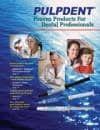The Joint Commission announced changes to its standards for accredited hospitals, critical access hospitals, and ambulatory health care organizations that provide diagnostic imaging services, including ambulatory organizations that have achieved Advanced Diagnostic Imaging certification. The changes will be effective July 1, 2014 with additional requirements to be phased in by 2015.
The standards changes relate to either quality and safety issues that were needed to more fully address the evolution of health care delivery practices, or expanding upon the current Joint Commission requirements, such as those related to magnetic resonance imaging. The revisions incorporate recommendations from diagnostic imaging experts, professional associations, and accredited organizations on topic areas that must be evaluated to ensure the safe delivery of diagnostic imaging services.
“With these updates, The Joint Commission’s goal is to ensure that our imaging standards remain up-to-date and sufficiently address quality and safety,” said Margaret VanAmringe, MHS, executive vice president, Public Policy & Government Relations, The Joint Commission. “These rigorous imaging standards address overall patient safety, oversight of imaging services, staff competency, radiation safety procedures, equipment maintenance, and quality control. This system evaluation seeks to ensure that organizations providing imaging services have the requisite infrastructure and safety culture to minimize radiation exposure to patients and staff and provide safe and effective care.”
Because of the scope of this work, standards changes will be addressed using a phased approach. These initial standards changes represent phase one, which focus on computed tomography (CT), nuclear medicine (NM), positron emission tomography (PET), and magnetic resonance imaging (MRI) services. Phase two, to be implemented in 2015, will focus on fluoroscopy, minimum qualifications for clinicians who perform imaging exams, and cone beam CT used in dental offices and oral-maxillary surgery practices.
Areas addressed in the new and revised standards include:
- Minimum competency for radiology technologists, including registration and certification by July 1, 2015
- Annual performance evaluations of imaging equipment by a medical physicist
- Documentation of CT radiation dose in the patient’s clinical record
- Meeting the needs of the pediatric population through imaging protocols and considering patient size or body habitus when establishing imaging protocols
- Management of safety risks in the MRI environment
- Collection of data on incidents where pre-identified radiation dose limits have been exceeded
The new and revised elements of performance are available on the Joint Commission’s website. The requirements will be published in the 2014 Ambulatory Care, Critical Access Hospital, and Hospital Comprehensive Accreditation Manuals scheduled for publication in March 2014 and in the spring 2014 E-dition® update.









